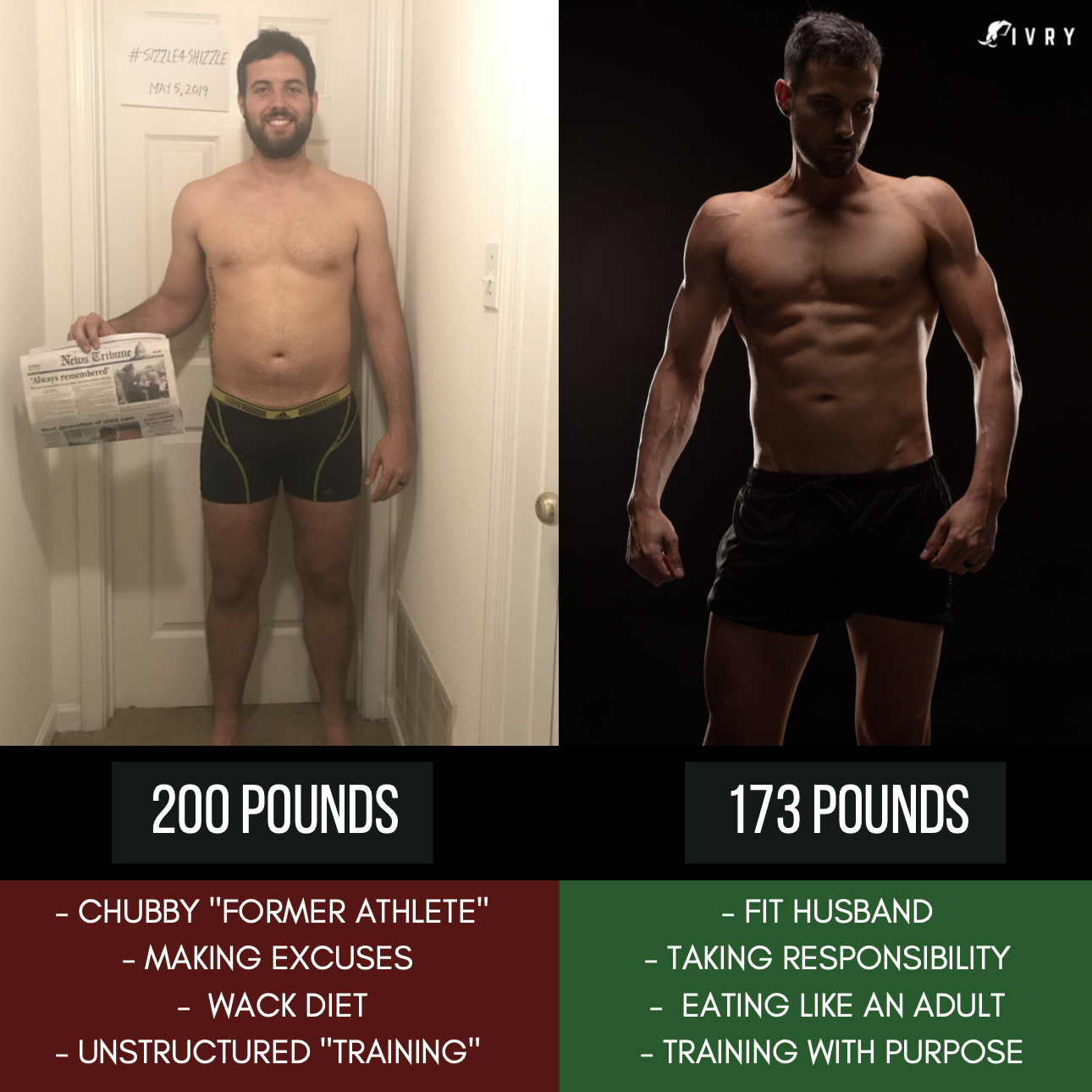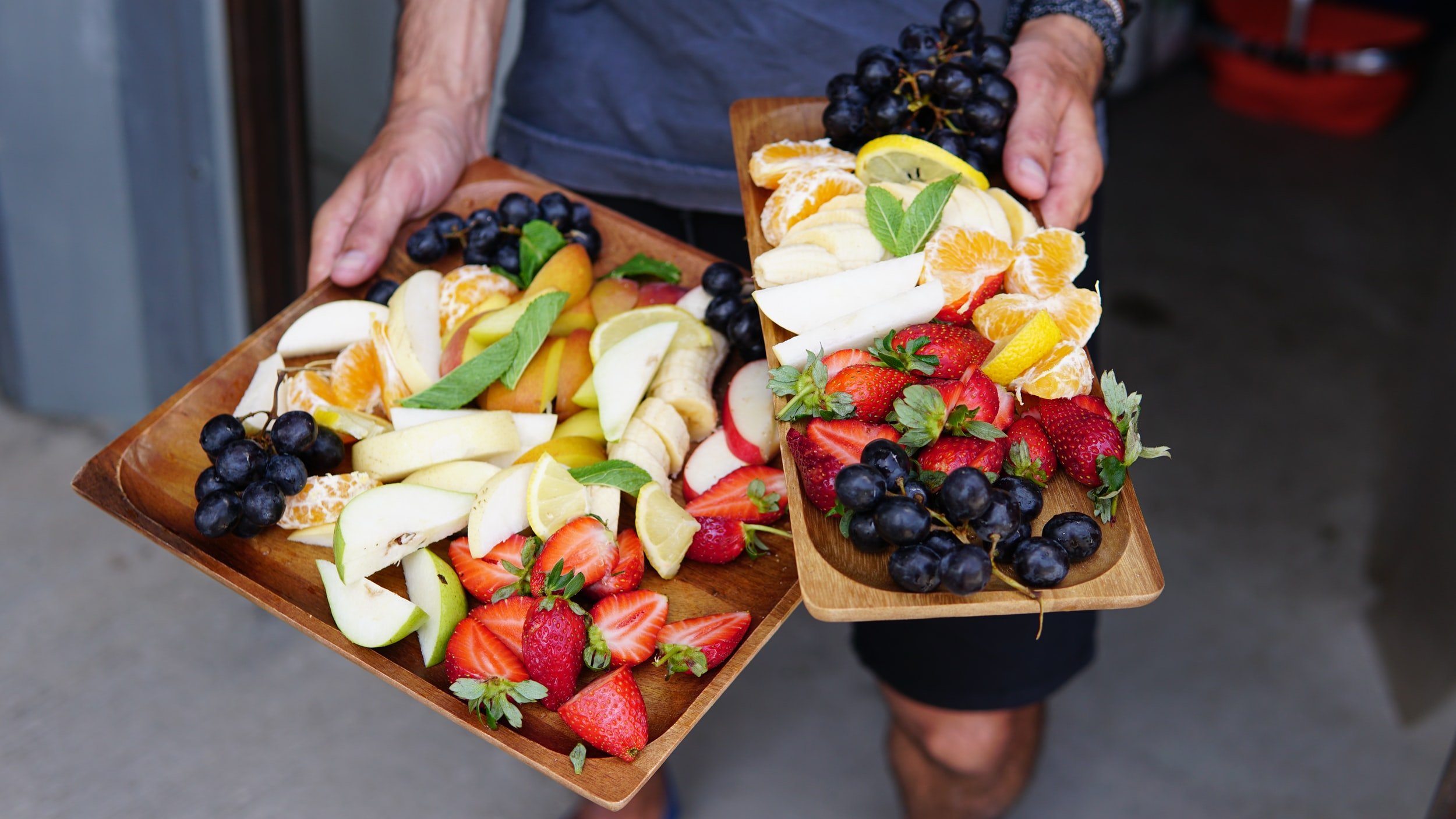I've been doing a lot of thinking lately on what most people really want when it comes to the relationship between their body composition and their lifestyle.
And I think I've made one big realization.
It has to do with our metabolisms.
Are you ready for it?
Most people who want to improve their body composition also want to be able to eat enough food to enjoy their lives.
In other words, being super lean and "hot-looking" probably isn't worth it if you have to eat like a bird, never go out for pizza with friends, and punt your favorite alcoholic beverages to the curb for a lifetime.
In this case, I think a picture is worth a thousand words.
Have you seen a photo like this at some point on social media?
My guess is that you have.
After all, what could possibly be more jealousy-inducing than a picture of a super fit guy or gal in a luxurious resort setting enjoying what seems to be a plethora of delicious foods and drinks?
They're lean, muscular, and aesthetically pleasing in a way that would make nine out of ten people whisper, “I want that,” under their breath.
My point?
I think this is what nearly all of us are secretly longing for in quiet desperation.
But before we get too far, I want to be clear about what you can expect from this article:
Firstly, I’m going to continue to make the case that living a lean lifestyle is more enjoyable when you can eat plenty of food.
I’m going to remind you and encourage you that your metabolism is adaptable.
I’m going to offer you my two best tips for how to improve your metabolism for the sake of eating more while keeping your lean look long-term.
I’m going to highlight a few specific lifestyle examples of how to take actionable steps today.
In short, if you’re interested in how to eat more food while looking lean and feeling confident in your own skin, you’re in the right place.
Your metabolism can change.
Most of you reading this article won't know me personally, but I think it’s relevant here to mention that I have an insane appetite, which means I couldn't be less interested in looking super peeled if it means I have to be on something like 1,800 calories for an extended period of time.
Pass!
I'd rather be fatter and happier.
But here's the silver lining.
Your metabolism can be improved over time, which seems to be somewhat classified information in the fitness industry.
And as much as I hate to admit this, even I wasn’t aware of this until I entered the pre-planning phase of my own body recomposition effort in 2018.
I remember it distinctly: I was watching a Paul Revelia video on YouTube, and he kept talking about adaptive metabolisms.
I was shocked.
Up until then, I had assumed our metabolisms were kind of like femurs or noses in the sense that they were fixed and unchangeable. I assumed we were just born with them and that they were completely out of our control.
But in that moment I learned that that’s not the case:
You can, in fact, up-regulate and down-regulate your metabolism based on how you live your life.
Ever since then I've been fascinated with the idea of improving my own metabolism for the sake of eating as much food as possible while looking lean and muscular.
Is anyone with me?
Assuming you are, I want to throw two big tips at you today for how to improve your metabolism for the long haul.
1. Building Muscle Is Probably the Best Way to Improve Your Metabolism
I've mentioned this before in content I've put out, but muscle tissue is roughly three times as metabolically active as fat tissue, which means your body requires more energy to maintain muscle than it does fat.
This is great news for jacked people because it means you need approximately three times as many calories to support your muscle tissue than your fat tissue.
The implication? Arguably the best thing you can do for the sake of improving your metabolism is to add as much muscle mass to your frame as possible.
More muscle means more food.
And this is true for you as well, ladies! Adding muscle can be done strategically to maintain whichever curves you currently love about your body.
In other words, building muscle doesn’t mean you have to “get bulky.” Like many female physique competitors these days, you can focus heavily on certain areas of your body like the glutes, hamstrings, quads, and back to help you emphasize that stereotypically feminine appearance.
I might even argue that it’s more important for women to try to build muscle since they tend to be smaller than men by nature. Smaller people require less food than bigger people, so as much as you can muscle-up your frame while maintaining a physical appearance that supports your confidence, the better.
So again, more muscle means more food.
Are we tracking?
To illustrate this point further, I want to offer you quick, personal anecdote.
How I Improved My Own Metabolism
In my mid-to-late twenties, I started trying to figure out the whole “macros” thing because I was unhappy with how I had “let go” of my formerly athletic and trim physique.
At the time, I was eating a decent amount of protein, but my calories were generally still pretty low.
But they weren't low enough to have me in a meaningful caloric deficit, which landed me in a state of perma-chubbiness with a "bad" metabolism while making little to no progress in terms of improving my body composition.
In my opinion, that's one of the worst places to be: chubby with a sluggish metabolism.
For for those who are curious, I was eating around 2,300 calories per day (when I wasn’t overeating on the weekends) with plenty of belly pudge and no definition. I was hovering between 200-205 pounds at six feet tall.
Now I'm eating between 3,500-4,000 calories per day at 190 pounds with way more muscle and way less chub while gaining weight slowly at a rate of around 0.25% per week (on purpose).
That's a 1,200-1,700-calorie increase in my metabolic performance, which is the equivalent of four to five large pieces of pepperoni pizza from Papa John's or 20 Double Stuf Oreos per day.
Oh, and I’ve lost between 10-15 pounds since then.
So the question is…
What the heck did I do?
And the answer is simple.
I tried to build as much muscle as possible.
I resistance trained intelligently and systematically within evidence-based training guidelines and best practices from leading industry experts.
More specifically, I sought to hit between 10-20 sets per muscle group within a few reps of technical failure per week.
I chose exercises with an optimal stimulus to fatigue ratio.
I made minor technique adjustments on those exercises to favor hypertrophy as much as possible.
I overloaded my sessions properly over time.
I manipulated my session to session volume strategically to allow for optimal recovery.
I ate enough protein to support my muscle growth goals.
And most importantly, I trained this way consistently for four years.
And now I’m a real life example of what it can look like to juice up your metabolism simply by putting in the work toward training for muscle growth, eating a high-protein diet, and implementing those habits consistently over time.
Pretty cool, yeah?
The somewhat unspoken implications here, however, are the following:
You might have to sacrifice a lean look now for the sake of a lean look later.
What I mean by this is that muscle is built best when we eat in a slight surplus or at least match our total daily energy expenditure (TDEE) calorie-for-calorie with our caloric intake.
Unless you’re brand new to training, this probably means you are going to have to gain weight slowly.
Although I think this is best accomplished in the context of a one-on-one coaching relationship, the general rule of thumb is to aim to gain weight at a rate of 0.25-0.5% of your body weight per week.
Fortunately, I can proudly say that I’ve led by example here. I forfeited my 173-pound photo shoot bod to multiple cycles of surplus eating to favor muscle growth instead of being tight-fisted with my six-pack and shoulder veins.
Your training needs to be your greatest focus.
As much as activities like hiking, group cardio classes, boxing, yoga, and pure barre can be wonderful for overall fitness, I’m not aware of any powerful scientific literature that suggests they have any exciting metabolism-boosting benefits.
Stick to hypertrophy training or another form of high-volume resistance training like CrossFit for optimal metabolic improvements.
You are going to have to be patient.
In fact, “Play the long game,” is one of the most common phrases I use with my clients.
In a society driven by everything but delayed gratification, I find that a combined lack of patience and perspective are what prove to be most self-inhibiting for people who want to eat in abundance while sporting an increasingly lean and physique look long-term.
And really it’s that simple in most cases.
Having said all of this, I can guide you down this same path if you’re willing to adjust your lifestyle and put in the work.
Just keep in mind that I'm not a metabolic wizard with a fancy wand that unleashes its magical powers at the subtle swipe of a credit card.
You will still have to train hard and manipulate your dietary habits strategically (and sometimes even counterintuitively) for months and years, which transitions me smoothly to my next point.
2. You Might Have to Reverse Diet and Be Willing to Get Chubbier Before You Get Leaner
Honestly, I think this is one of the most valuable strategies any coach could ever bring to the table.
Why? Because it's super counterintuitive and terrifying for most people who have struggled to lose weight for years.
Eat more and actually gain weight temporarily? Yes!
It's called metabolic building and/or reverse dieting, and the point is to set you up for better body recomposition success in the long-term by up-regulating your metabolism and enhancing your training quality.
Unfortunately, this article would be way too long if I got into the exact details of how to reverse diet, but just know that increasing your calories systematically in controlled increments is an extremely effective way to improve your metabolism over time while training hard and eating a well-balanced diet designed for physique improvement.
The only downside to this tip is that most people won’t be able to implement a well-designed reverse diet protocol on their own, which means the best way to reverse properly is to hire a reputable coach.
But if a one-on-one coaching relationship isn’t something you can afford right now, don’t fret.
There are still things you can start doing right now.
How to Get Started Right Away
If you’ve been sold on the idea of “playing the long game” in favor of eating more over time while keeping your physique intact, here are a very quick ideas that may or may not help you get started:
Quit hopping from plan to plan and settle into something consistent and sustainable for the long-term.
In other words, quit experimenting with new dietary patterns and training plans in search of the one “perfect” plan for you. Consistency is the name of the game.
Similar to that first point, make sure the main focus of your exercise regimen is resistance training.
I’m feel like I’m feeding a fed horse with this point since I seem to mention it in nearly all of my articles, but it really is that important.
If you aren’t training with weights, you aren’t going to build an appreciable amount of muscle that will allow you to eat more in the long-run.
You could consider joining a CrossFit gym.
But before you drive to my house and toss a Molotov cocktail through my living room window because you hate CrossFit with all of your mind, body, and soul, know that I have to mention it here due to the potential metabolic and lifestyle benefits it can offer.
Without belaboring the point, CrossFit is unique in that it incorporates resistance training while challenging the cardiovascular system at the same time. So as it pertains to living that lean lifestyle while eating in abundance, CrossFit can be a quicker road to Rome because you can reap the metabolic benefits of adding muscle mass while cashing in on an increased energy expenditure from demanding workouts that allow you to eat more on a daily basis.
In a lot of ways, I think CrossFit allows people to recomp more effectively than any other training strategy, but I realize it won’t be for everyone.
Summary
Most people don’t just want to look good. They want to look good and be able to eat plenty of food while enjoying life to the fullest.
The best way to do this is to focus on building as much muscle as your lifestyle allows. This is because muscle tissue is approximately three times more metabolically active than fat tissue. In other words, the more muscle you have, the more you get to eat without gaining weight.
The best way to build muscle is to focus primarily on hypertrophy training or something that incorporates resistance training like CrossFit.
You’ll also want to spend as much time eating at maintenance or in a small caloric surplus as possible.
And in some unique cases, some people will need to reverse diet and “risk” weight gain in favor of improving their metabolism before attempting a focused fat loss phase.
Lastly, remember that nothing about this process will be quick and effortless.
Most people with impressive metabolic “transformations” will have accumulated years of strategic training and dieting. In my case, it took me about four years to be able to eat 3,500 calories per day while staying relatively lean.
Be willing to play the long game as you think about whether or not metabolic building is something you want to attempt. Although the rewards can be truly life-changing, the path to success will require discipline, diligence, consistency, and patience.
As always, I really enjoyed writing this article, so if you found it helpful, do me a favor and send it to a friend who would rather be smashing the all-you-can-eat buffet as a lean machine than smashing their face into a wall from metabolic frustration.
Until next time,
-Andrew














